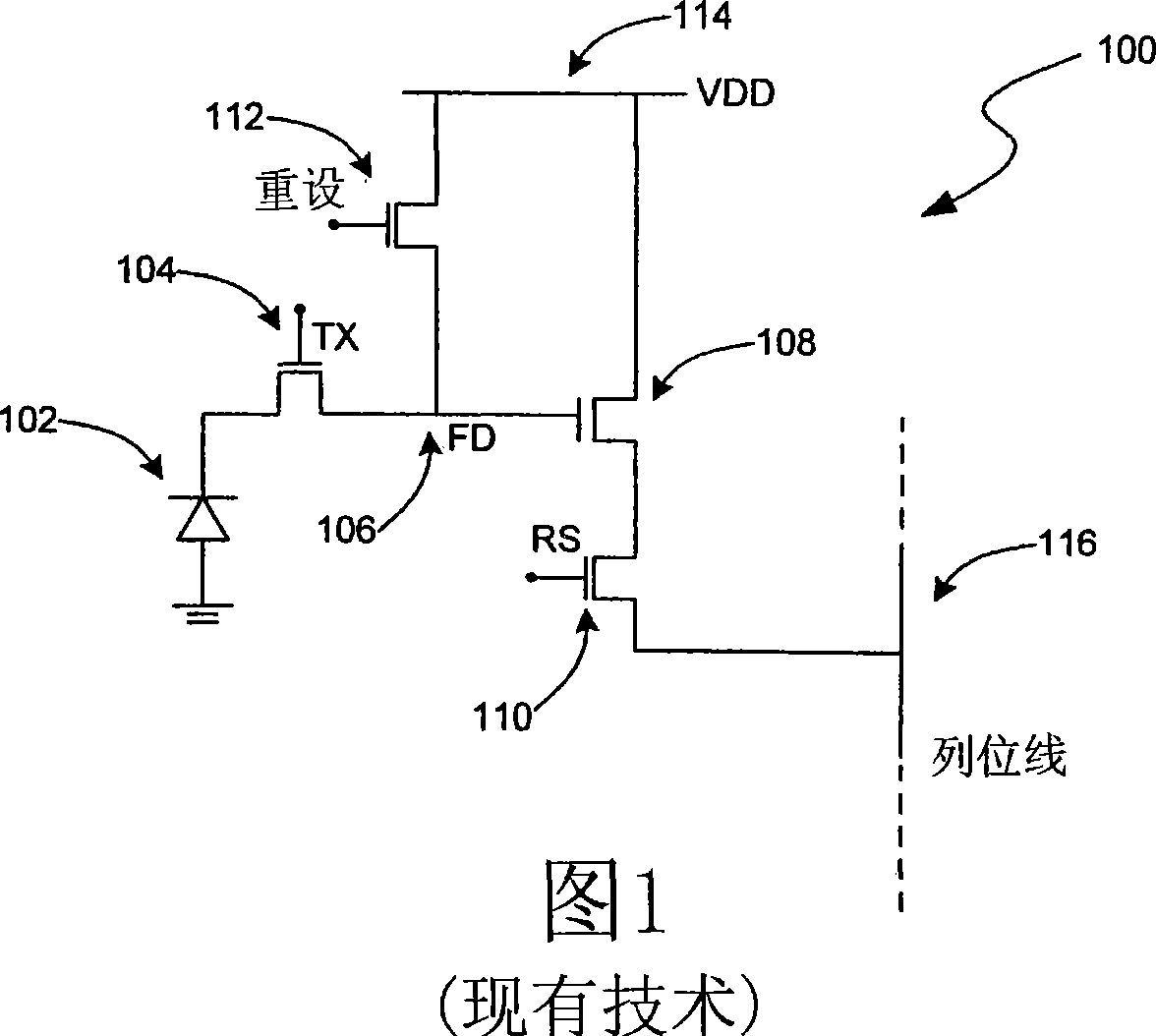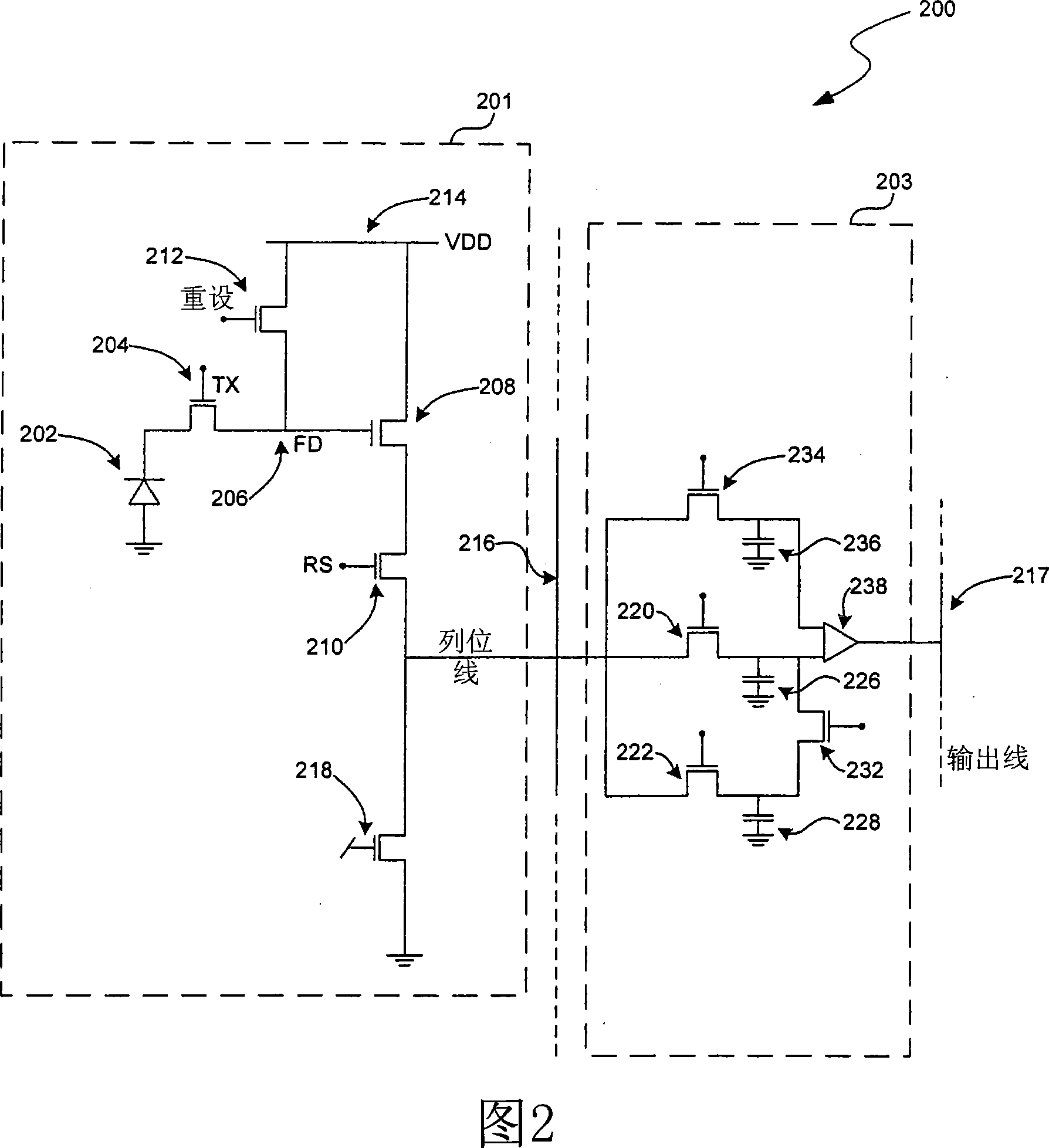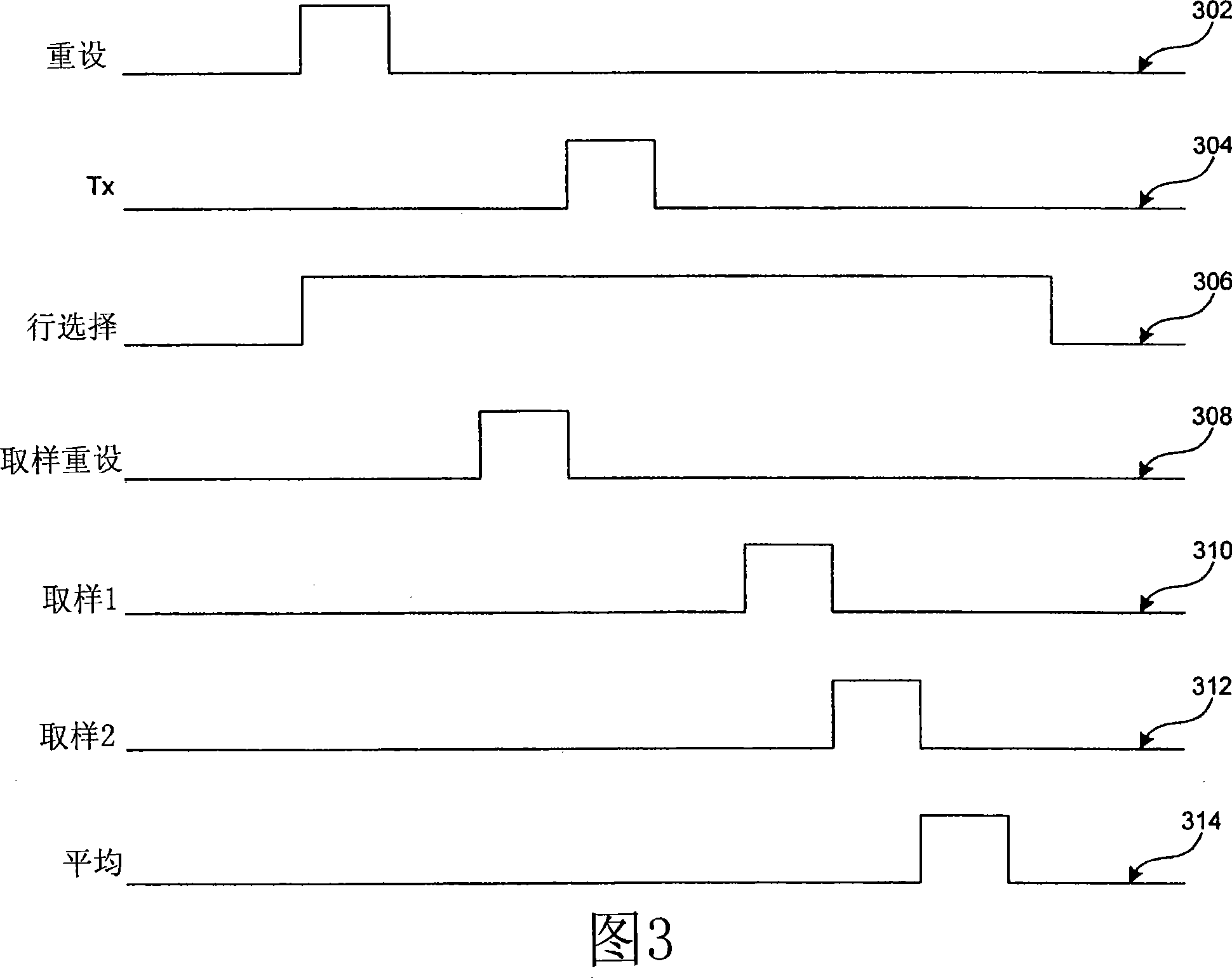Image sensors with output noise reduction mechanisms
An image sensor and capacitor technology, applied in image communication, color TV parts, TV system parts, etc., can solve the problems of increasing chip manufacturing costs, frame rate reduction, and unsatisfactory high-speed imaging applications of imaging devices, etc.
- Summary
- Abstract
- Description
- Claims
- Application Information
AI Technical Summary
Problems solved by technology
Method used
Image
Examples
Embodiment Construction
[0022] This disclosure describes image sensors with output noise reduction mechanisms. It will be appreciated that several of the details set forth below are provided to describe the following embodiments in a manner sufficient to enable a person skilled in the relevant art to make and use the disclosed embodiments. However, several of the details and advantages described below may not be necessary to practice some embodiments of the invention. In addition, the invention may include other embodiments within the scope of the claims but not described in detail with reference to FIGS. 2-6 .
[0023] FIG. 2 illustrates an image sensor 200 having an output noise reduction mechanism and configured in accordance with an embodiment of the invention. Image sensor 200 includes pixel elements 201 for converting incident light into electrical signals. The pixel element 201 includes a transfer transistor 204 that connects the light sensing element 202 to a floating node 206 . The light ...
PUM
 Login to View More
Login to View More Abstract
Description
Claims
Application Information
 Login to View More
Login to View More - R&D
- Intellectual Property
- Life Sciences
- Materials
- Tech Scout
- Unparalleled Data Quality
- Higher Quality Content
- 60% Fewer Hallucinations
Browse by: Latest US Patents, China's latest patents, Technical Efficacy Thesaurus, Application Domain, Technology Topic, Popular Technical Reports.
© 2025 PatSnap. All rights reserved.Legal|Privacy policy|Modern Slavery Act Transparency Statement|Sitemap|About US| Contact US: help@patsnap.com



